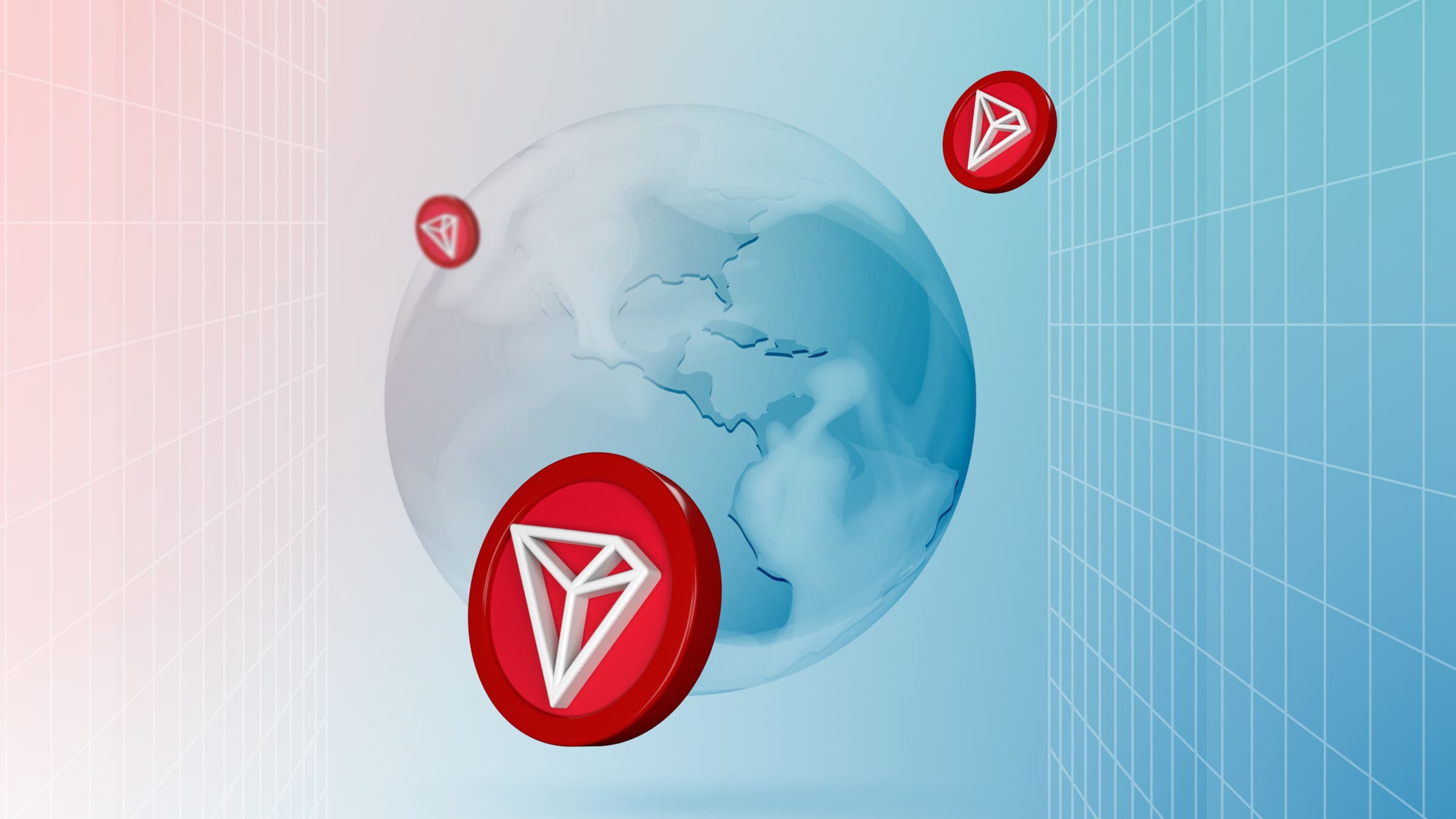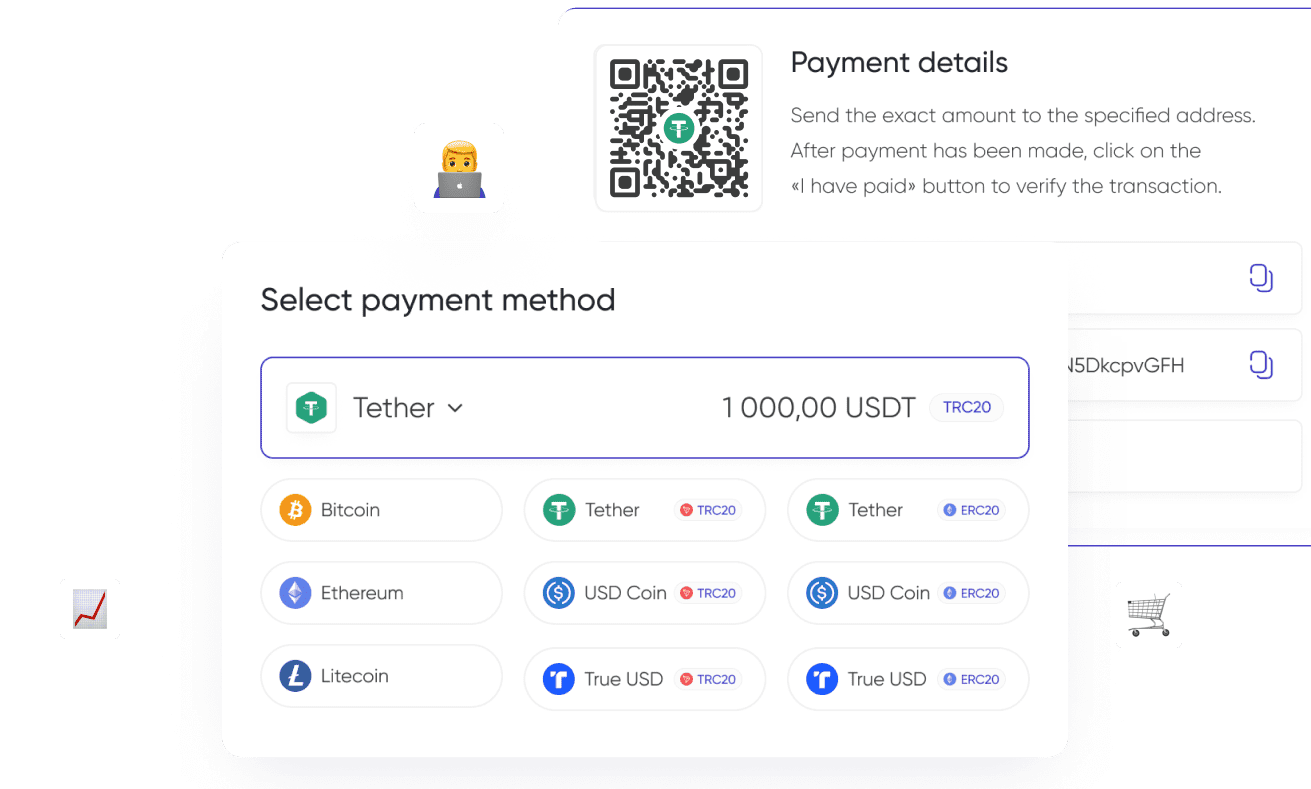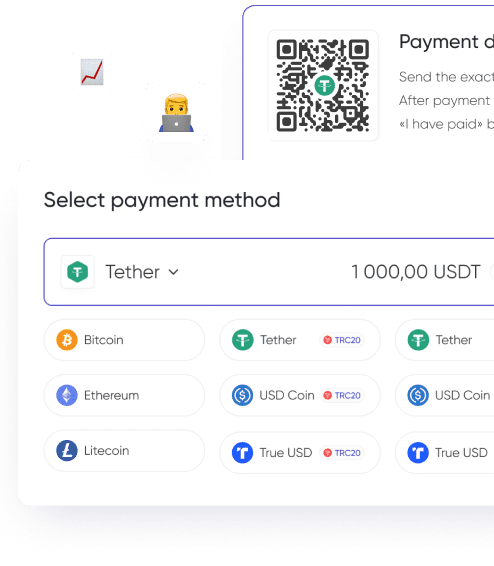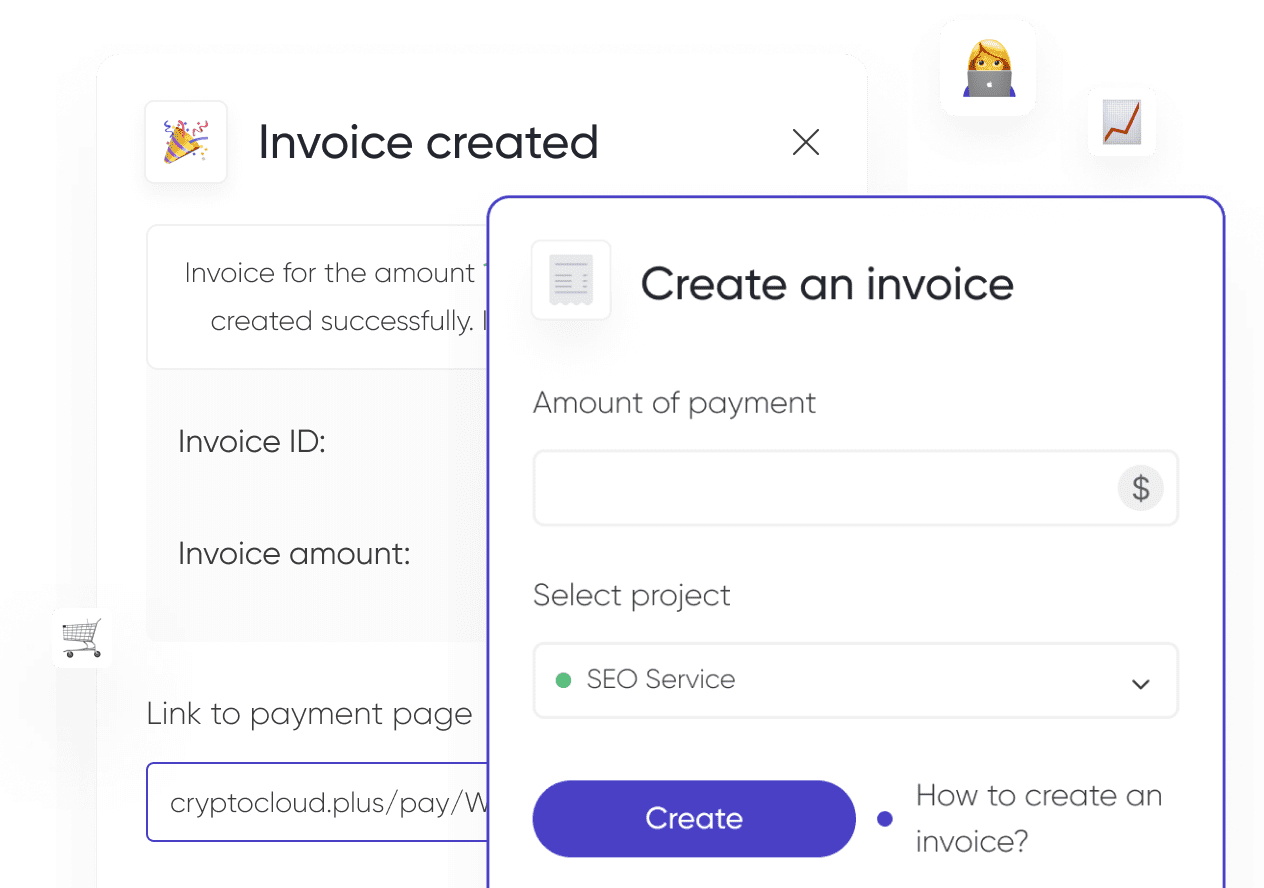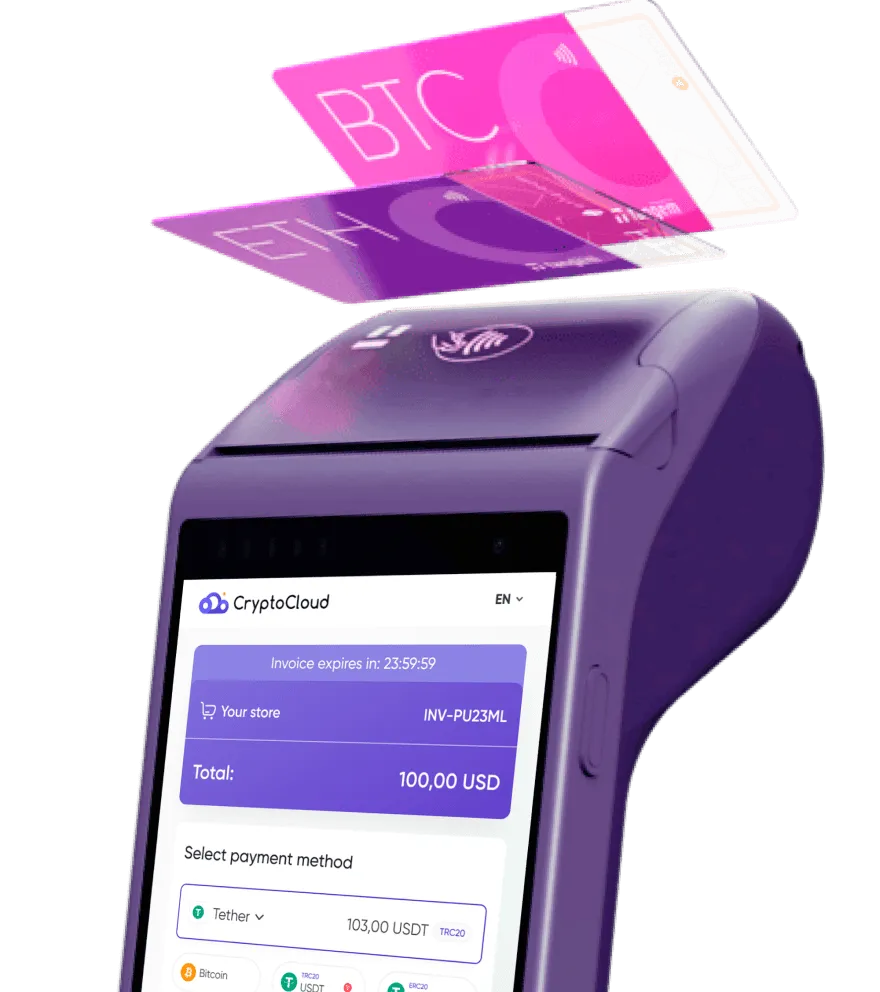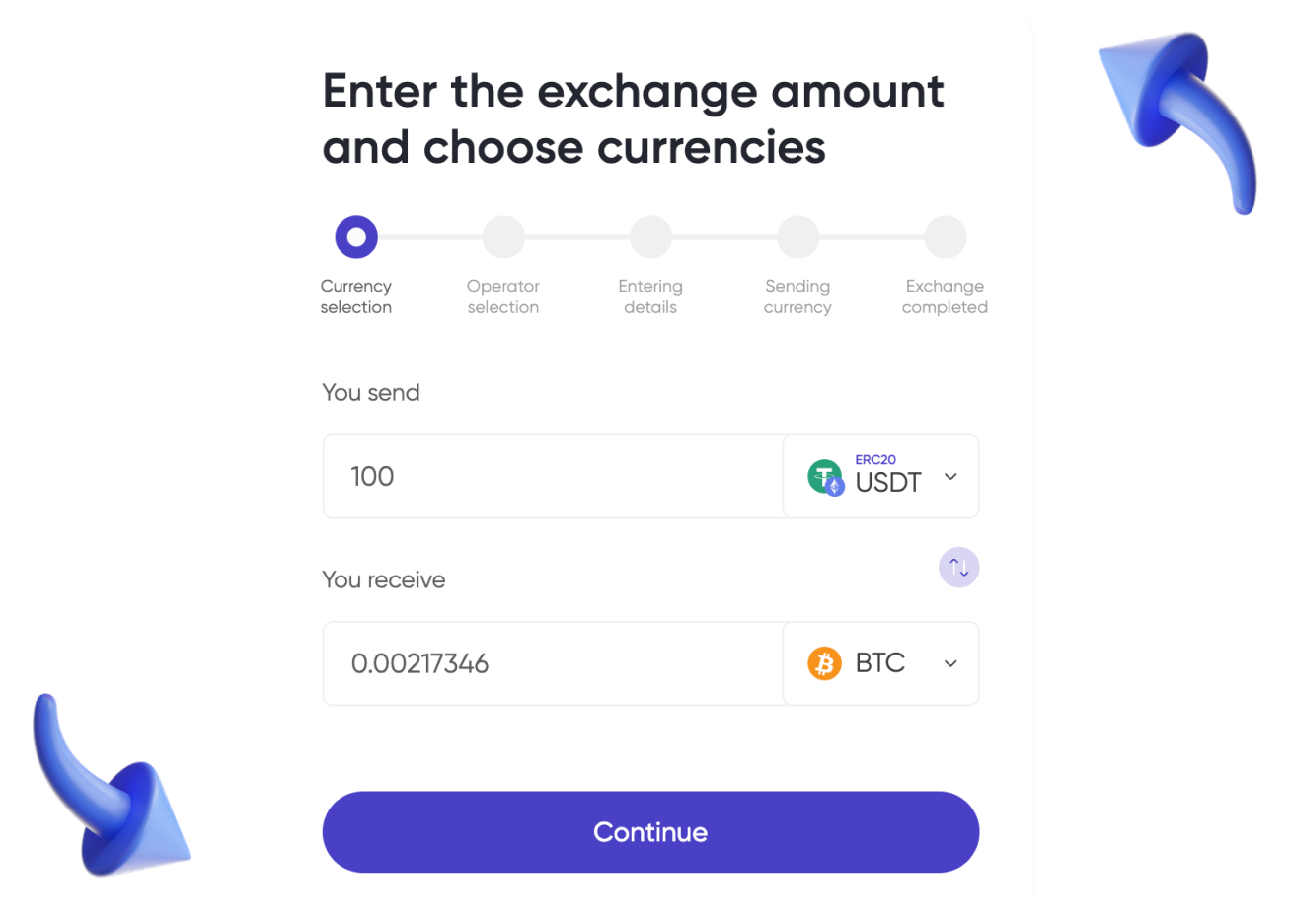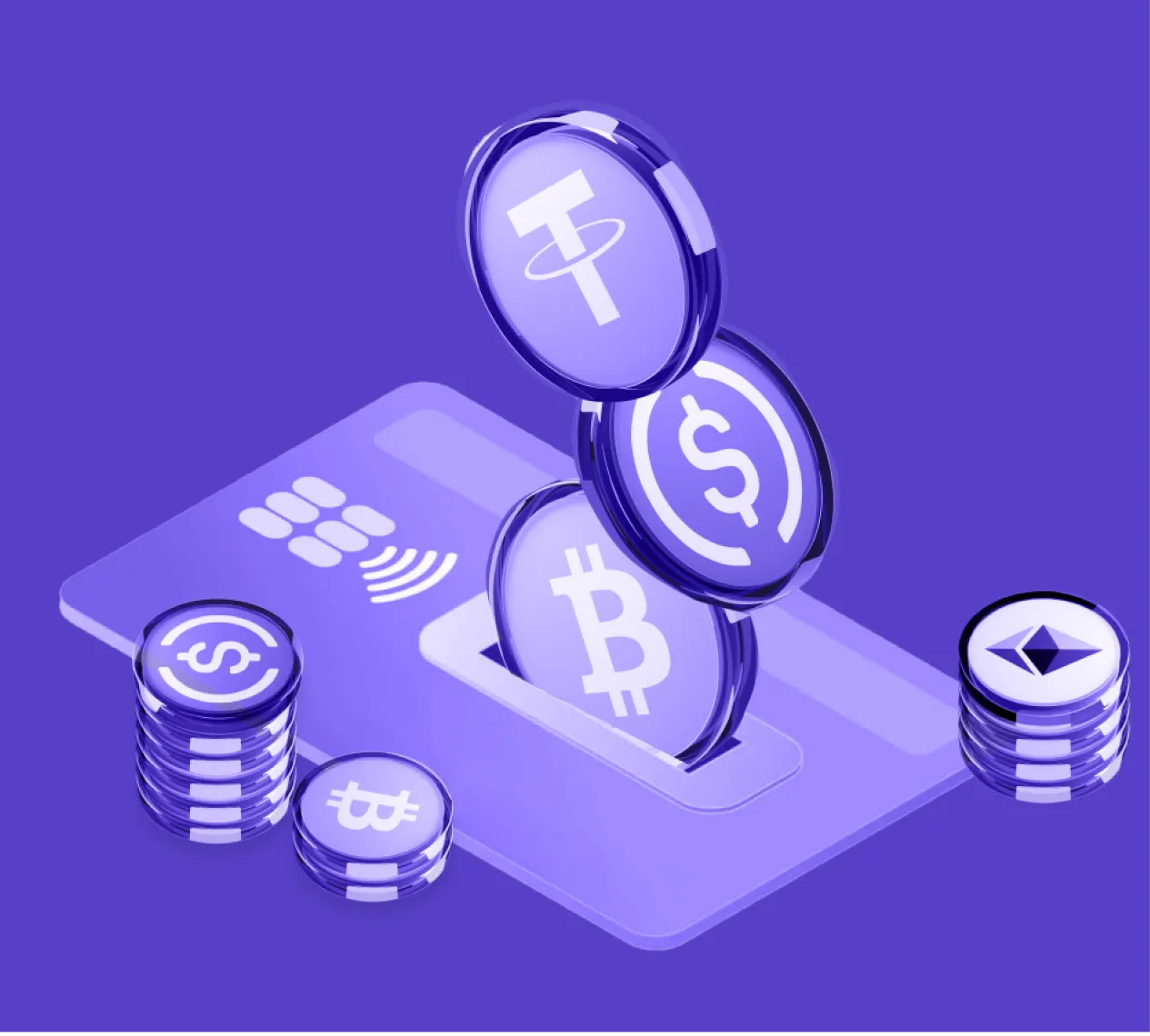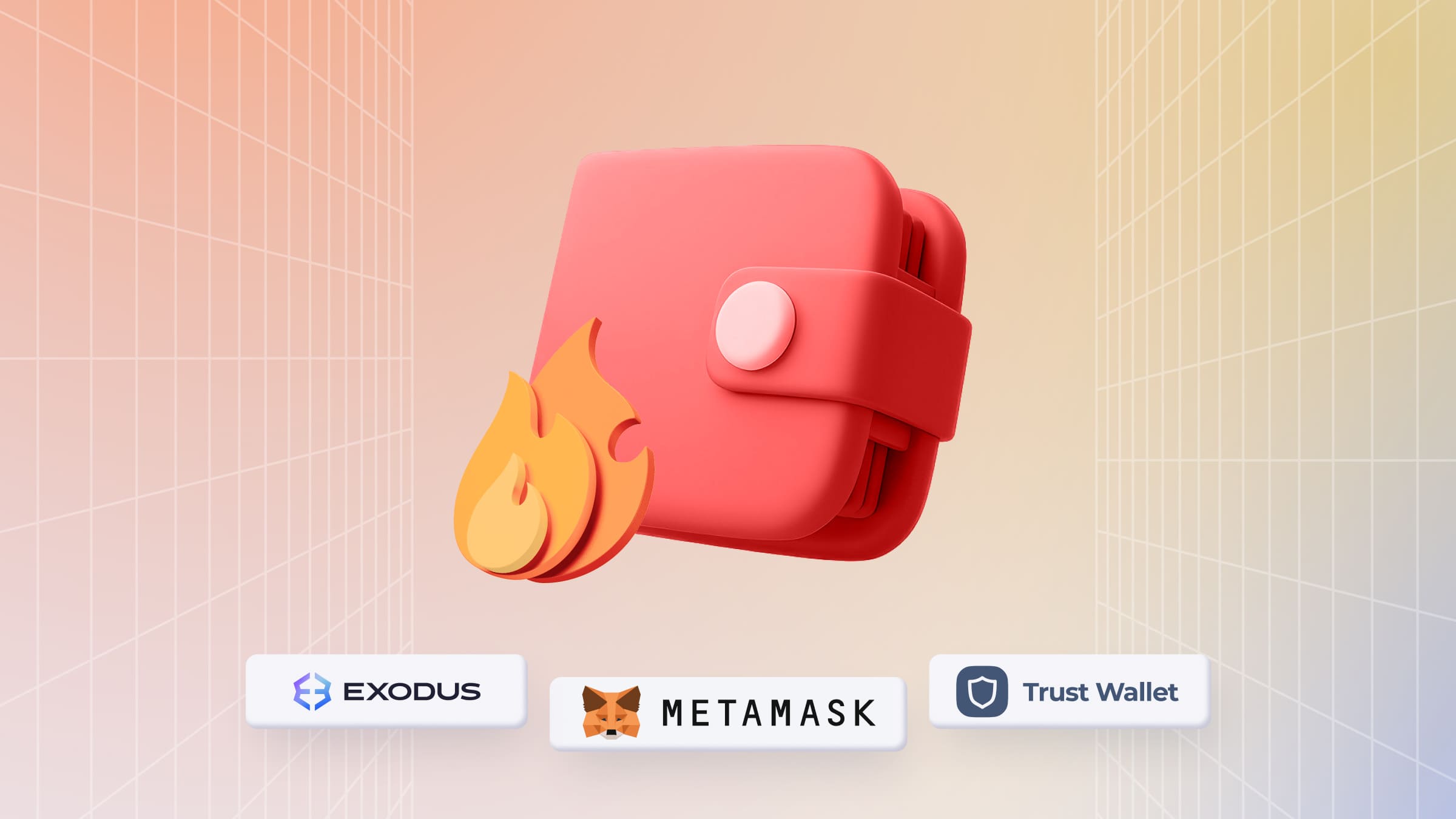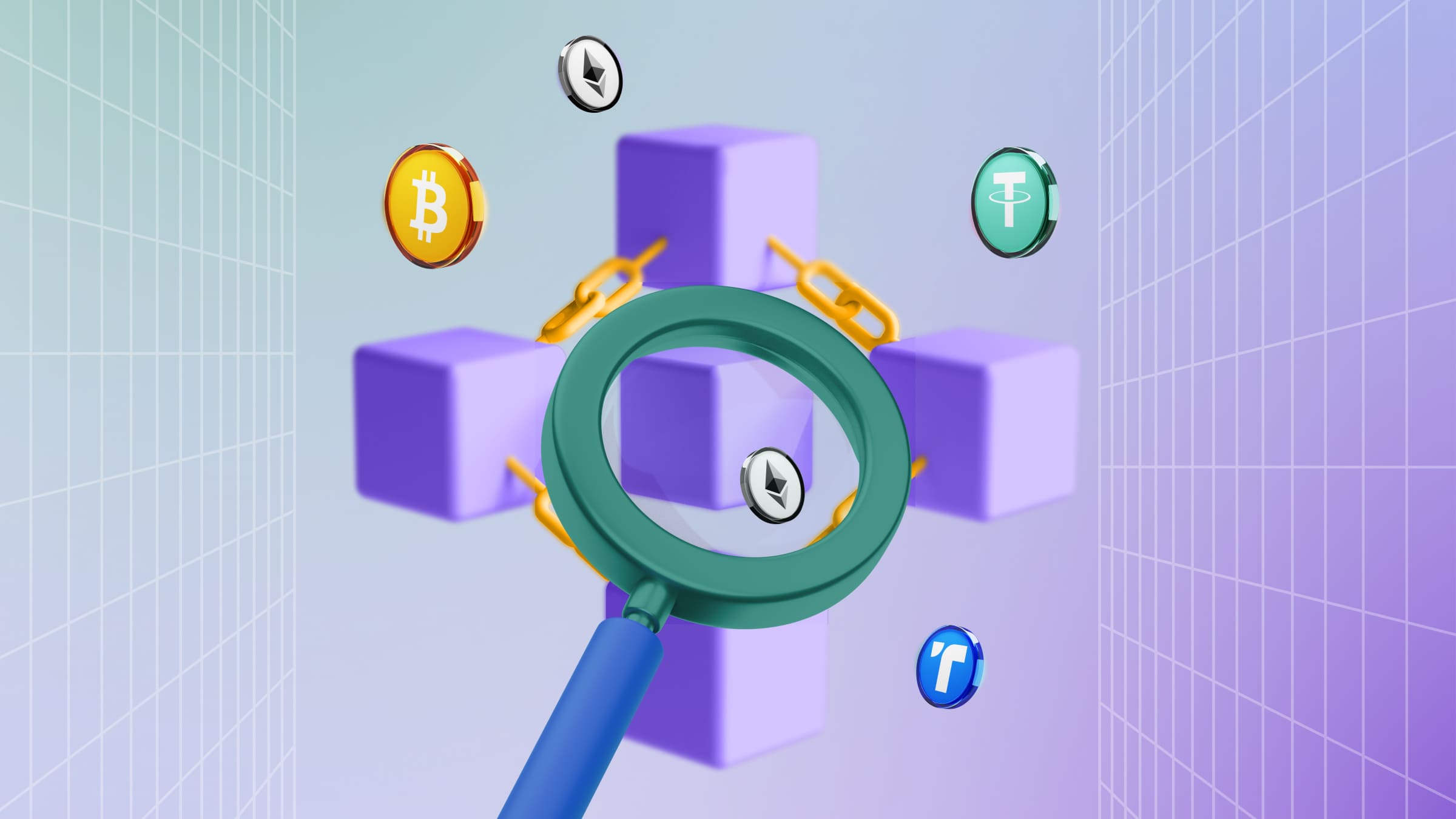TRON (Tronix, TRX) is a cryptocurrency on the platform of the same name. It is among the top-20 digital currencies by market capitalization ($10.2 billion). Its main purpose is to pay commissions and perform transactions within the TRON system and to support the work of applications created on the basis of this network.
In this article, we will explain the features and advantages of the TRON platform, how the Tronix currency was developed, the TRC-20 standard, and the prospects for this system.
What Is TRON?
TRON is a blockchain platform founded in 2017 by Chinese entrepreneur Justin Sun. The developer aimed to launch a decentralized platform for the exchange of entertainment content that creators could offer to users without the involvement of intermediaries. At the moment, the platform's owner is the Tron DAO organization.
Initially, the platform was based on Ethereum, but it was transferred to its own blockchain soon after its launch, having raised $70 million at the ICO. The blockchain consists of three levels: the core (modules of smart contract, consensus, and account management), the level of creation of decentralized applications and the level of storage.
The P2P consensus algorithm used is delegated Proof-of-Stake (DPoS). The rate at which new blocks are generated is one every three seconds.
TRON users can use the network to develop decentralized applications in various programming languages. The main language of the network is Java, but other protocols are also supported. In addition to applications, video content is stored and distributed on the platform.
In addition, TRON developers also created a cryptocurrency wallet — TronLink. More details about it were given in the article. Besides, there is a special platform for tracking TRON transactions — TronScan. We've described its features and working principle in the article «TronScan Blockchain Explorer: Features, Functions, and How to Use It».

Popularity Reasons
One of the main contributors to the popularity of the TRON network was the launch of the USDT stablecoin in 2019. The platform offered users much lower fees for transactions in this currency than Ethereum and Omni: while a transfer on Ethereum can cost up to $15-20, on TRON the average fee does not exceed $1. As of January-August 2023, the network supported 35% of the volume and 37% of transactions of this stablecoin.
In addition, other factors have also influenced the growing popularity of the TRON network:
- The speed of transfers. It has a maximum throughput of 2,000 transactions per second. This is appreciated by both regular users and developers whose applications involve a high number of internal transactions.
- Low transfer fees. TRON's fees are many times lower than the system's main competitor, Ethereum. While Ethereum remains a more versatile network, many users are switching to TRON due to its low transaction fees.
- DApps and smart contracts. The main goal of the system's creators was to launch a marketplace for developers of complex decentralized applications. Smart contracts allow the realization of DApps of any specificity: from games and social networks to stores and financial services.

- Use of consensus. TRON's network operates on a delegated Proof-of-Stake (DPoS) mechanism. This means that the functioning of the network is based on token holders voting for super-representatives (validators) that generate blocks. They take place every six hours.
- Stacking. Users can earn rewards when they participate in voting and network operations. This motivates crypto owners to support the network and take an active part in the management of the system, as well as in the distribution of profits from its operation.
Tronix: What You Need to Know
Tronix (TRX) is the platform's internal coin, the main unit of account for transactions within the blockchain. It is used to pay TRON commissions, pay users rewards, and power applications developed on the network. In addition, Tronix can be used to purchase other currencies — any tokens and coins compatible with the TRC 20 standard.
Tronix was launched in 2017 and initially existed as an altcoin based on Ethereum (ERC-20 standard). After successfully closing the ICO and opening its own TRON blockchain, the cryptocurrency was migrated to the TRC 20 network a year after the system's initial launch, in June 2018.
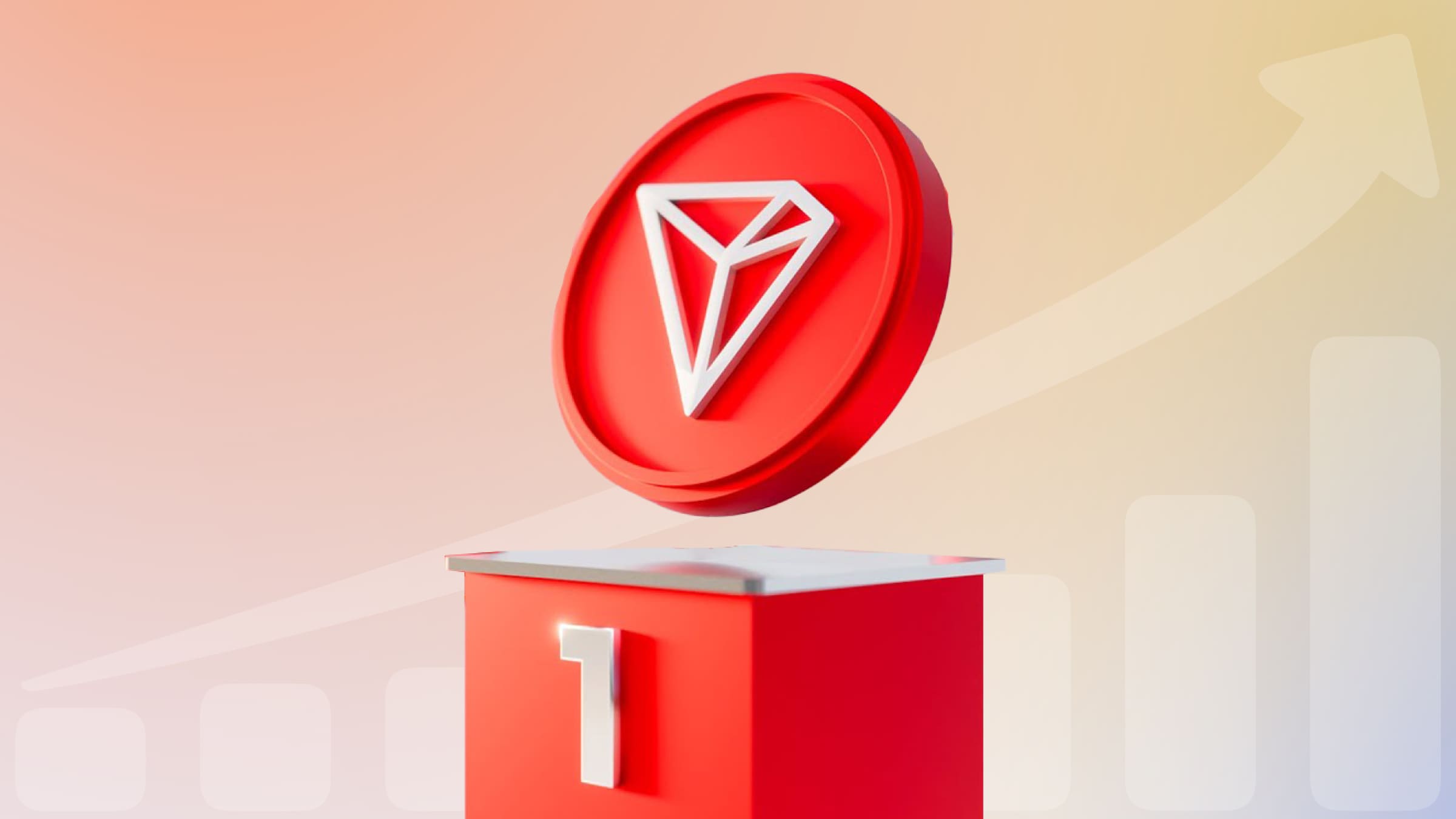
Tronix has a historical high of $0.3004. It was reached in January 2018. The low is $0.04917 (July 2021). As of March 24, 2024, TRX has a rate of $0.1193 and a capitalization of $10.47 billion, which puts this currency on the 15th place in the overall ranking. There are currently 87.78 billion coins in circulation. There is no limit to issuance.
TRC-20 Standard
The standard in cryptocurrencies is a set of rules that defines the features of tokens operating on a particular blockchain. In particular, it dictates the data contained in the token, its behavior, the operations available to the owner with the coin, the peculiarities of creation, burning, transfer, issuance, etc.
TRC-20 (TRON) was released as an alternative to ERC-20 (Ethereum). This standard currently supports multiple cryptocurrencies and stablecoins. These include:
- Tether (USDT) is the most popular stablecoin, pegged to the US dollar (1:1). The coin is issued by Tether, a company registered in Hong Kong. The launch of USDT on TRC-20 was one reason for the network's popularity: due to low commissions, the turnover of stablecoin on this blockchain is higher than on Ethereum.
- USD Coin (USDC) is the second most popular digital alternative to the dollar, which is pegged to the US currency. It is issued by the Circle consortium. Although the turnover of this stablecoin is lower than Tether, USDC is considered a more secure currency due to frequent audits and registration in the US.
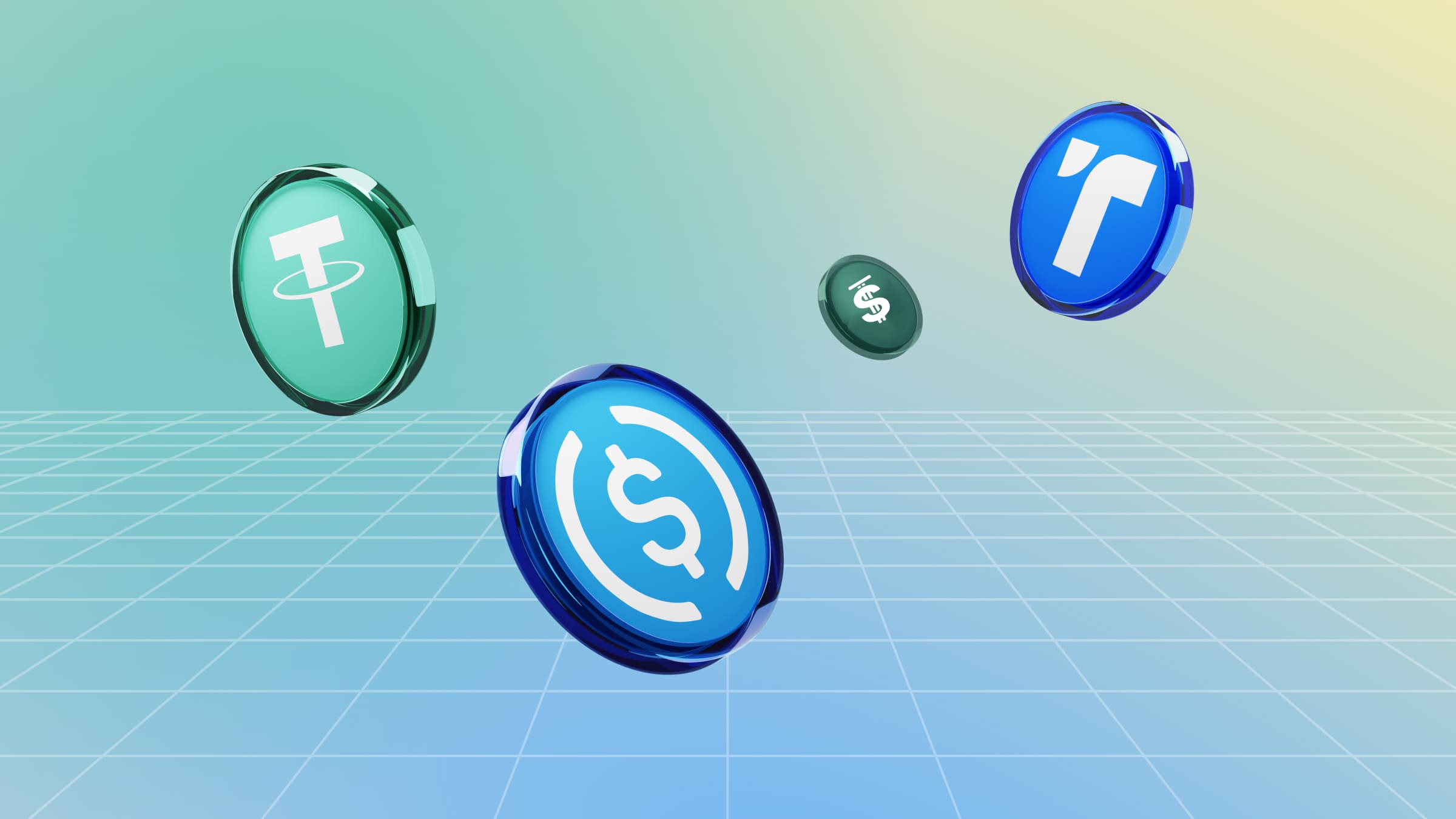
- Decentralized USD (USDD) is a TRC-20 cryptocurrency issued by the TRON system in May 2022. It is an algorithmic stablecoin that is pegged to the U.S. dollar and super-secured with cryptoassets (TRX, BTC, USDT, and USDC).
- True USD (TUSD) is a stablecoin from TrustToken designed as a transparent token. It is fully backed by funds held by independent trusts. It is one of the most centralized coins: its use is impossible without verification, and the account can be blocked by the system due to suspicious activity.
TRX Rate Forecast
According to various sources, for TRX, the forecast for the near future is quite favorable. DigitalCoinPrice estimates the average rate for 2024 to be $0.16. Changelly holds the same opinion: the value of the coin in 2024 is expected to range from $0.156 to $0.183 with an average price of $0.162.

Forecasts for the following years also assume price growth. DigitalCoinPrice believes the average rate will be $0.29 in 2025 and $0.87 in 2030. Gov Capital expects a rise to $0.42 by 2028. Changelly expects TRX to reach an average price of $0.24 in 2025, $0.52 in 2027, and $1.53 in 2030.
It should be remembered that cryptocurrencies are volatile and their price is affected by external circumstances, so any forecast may not be accurate.
Accepting Payments on the TRON Network With CryptoCloud
It is possible to accept payment for goods and services through TRC-20 TRON using a cryptocurrency payment system. CryptoCloud supports transactions through this network and offers merchants a wide range of functionality to process payments both on their company website, social networks, messengers and apps.
Cryptocurrency payment service allows to work through checkout, payment links, individual invoices. Merchant receives notifications about transactions in real time, can view statistics in a personal account and open access to it for other users. The number of projects that can be connected to the personal account is unlimited.
The system for accepting cryptocurrency on the website is integrated free of charge, and only an email is needed for registration. The commission for processing payments is from 0.4%. For integration, you can use ready-made modules for CMS, HTML or API. Withdrawal of funds to the merchant's wallet is performed within a few minutes.
TRON for Entrepreneurs
TRON is a popular decentralized platform that offers users its own network (TRC-20) and currency (Tronix). It is valued for its low fees, fast transaction processing, and functionality for developing decentralized applications.
To start accepting cryptocurrency payments through the TRON network, you can use the CryptoCloud platform. We offer processing services, convenient checkout, the ability to work through social networks or applications, as well as a payment tracking system and currency exchange on the system's website.

